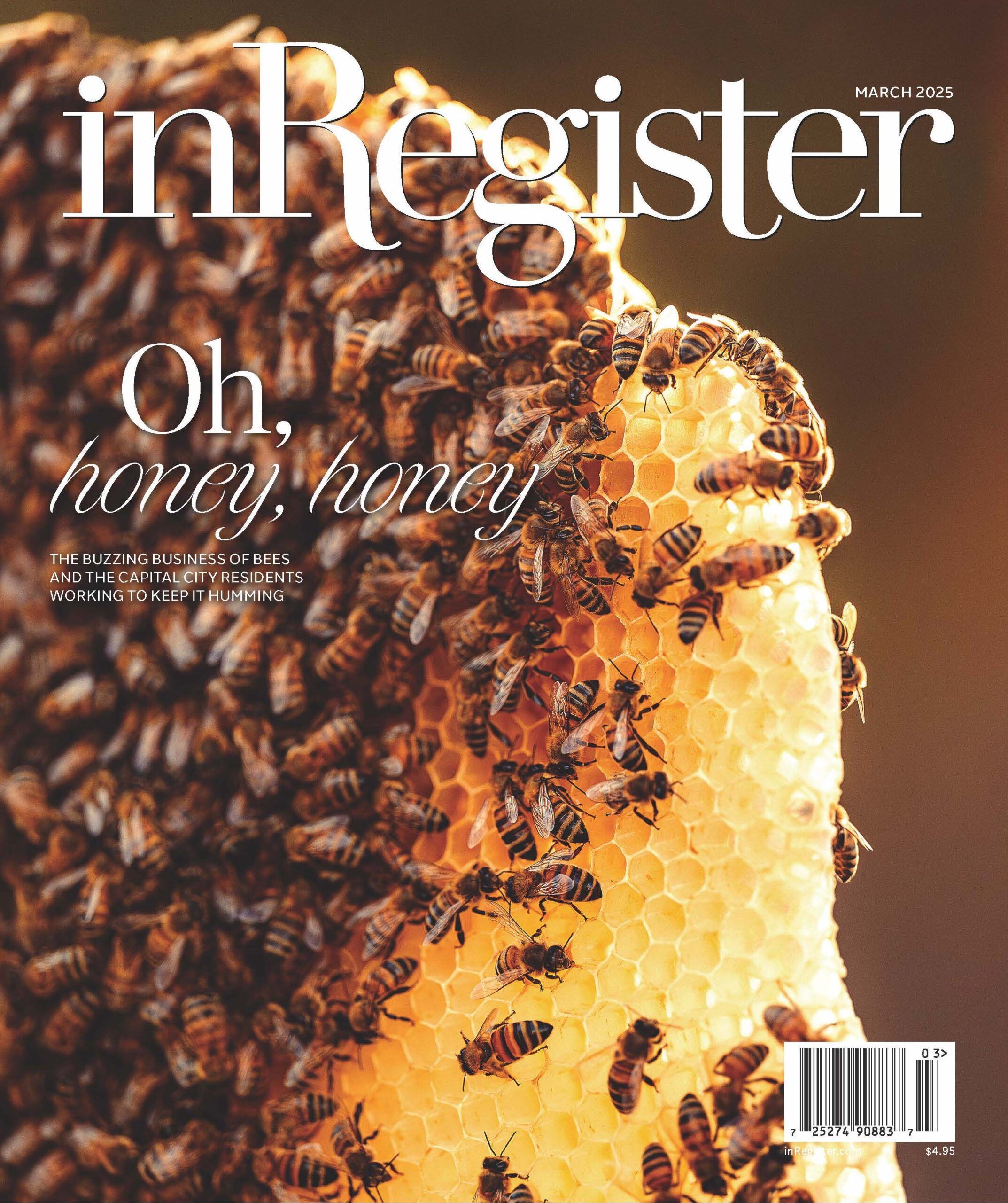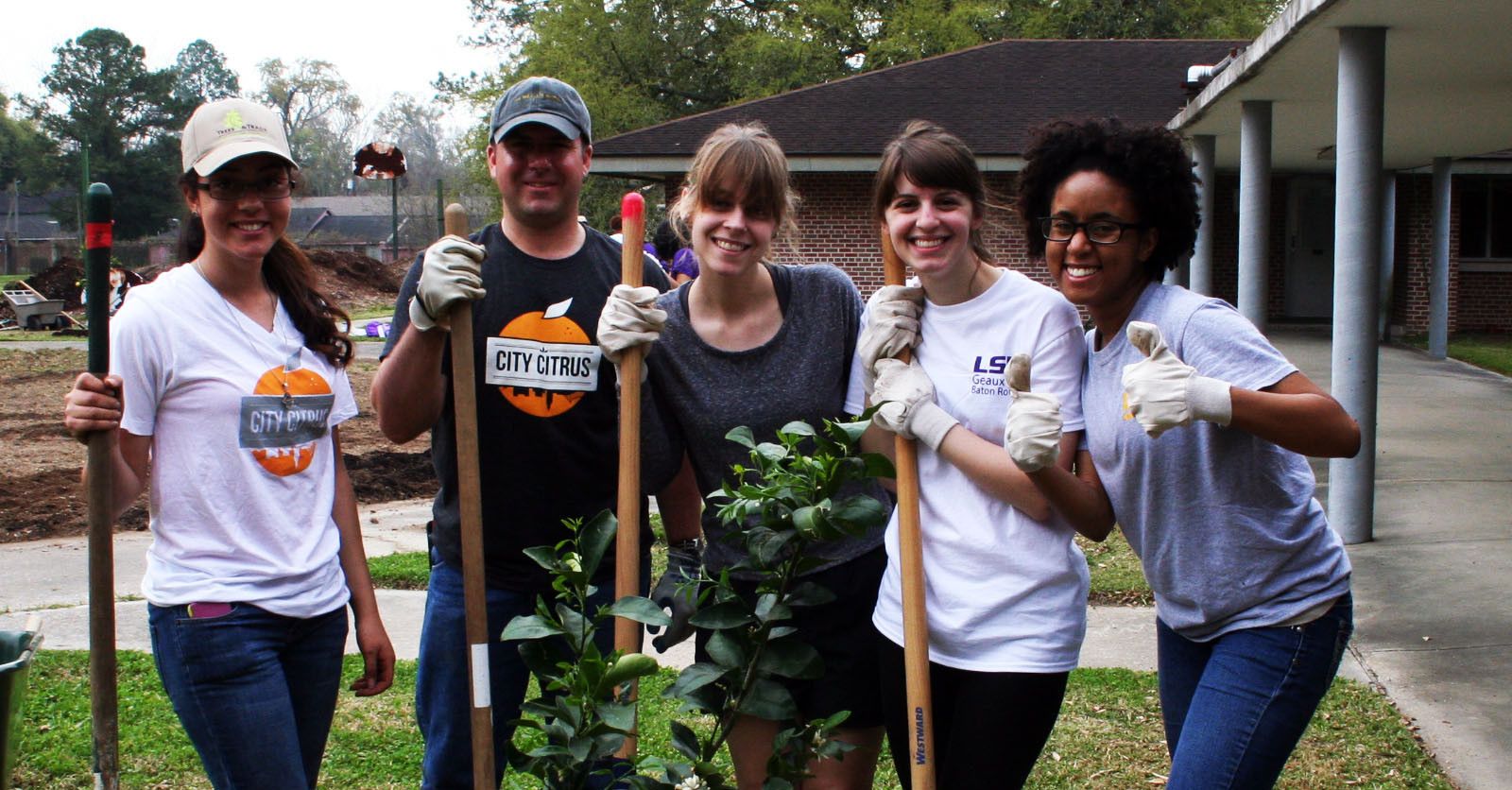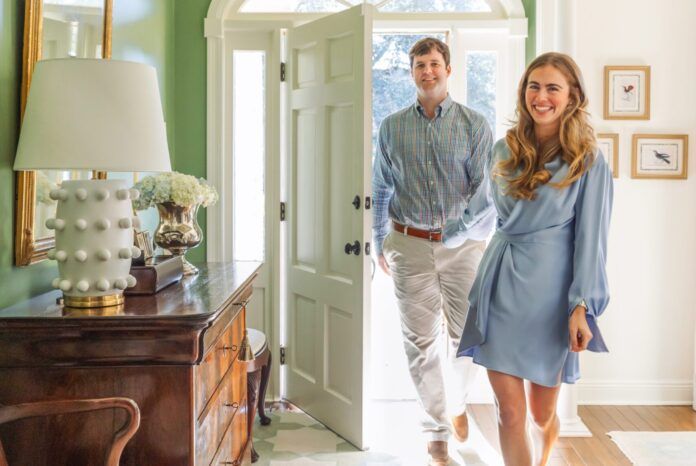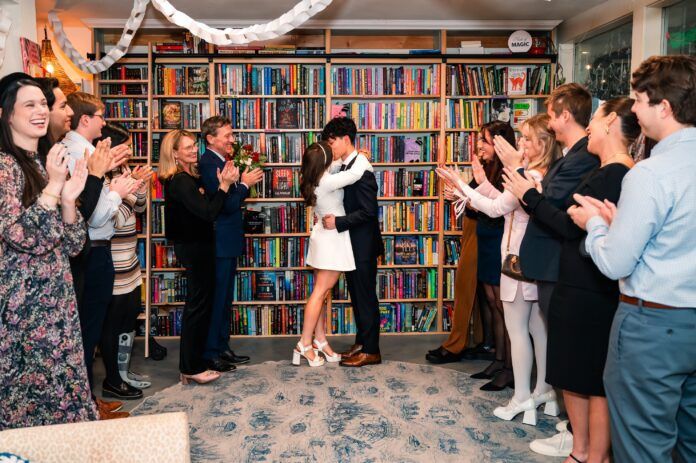Giving Back: Baton Rouge Green
Fruits and vegetables are a rarity at the Greater Baton Rouge Food Bank. Though fundraisers and donations help immensely when it comes to boxed and canned goods, the nonprofit often comes up short when providing fresh produce.
So when the food bank received 2,800 pounds of fruit and vegetables last December, its staff members were more than ecstatic—and so were the recipients.
The food came from Baton Rouge Green’s “pick day.” The nonprofit runs a program called City Citrus that encourages locals to become “citrus shepherds” and plant locally sourced citrus trees in maintained but underused urban spaces. When the fruit is ripe, anyone is welcome to pick, take and eat. Noticing there was an abundance of produce available late last year, pick day was held. Plans are in the works to make it an annual event.
In addition to its City Citrus program, Baton Rouge Green also runs several other initiatives. Among them are Living Roadways, Neighborhood Woods, i-Tree inventory, Plant Smart and Fall Tree for All.
Living Roadways, the nonprofit’s signature program, keeps roadside trees healthy—you’ve probably seen the sponsor signs on the side of the interstate. Neighborhood Woods is a national campaign that urges the planting of trees in environmentally underserved neighborhoods. i-Tree inventory keeps track of the city’s urban canopy to help quantify environmental and economic benefits, Plant Smart educates children and adults on all things green, and Fall Tree for All sells plants grown within 100 miles of Baton Rouge; the plants include natives such as paw paw, persimmon, mayhaw, and bigleaf magnolia.
“We are very much about beautification of the city,” says Diane Losavio, the organization’s executive director.
Founded in 1987, Baton Rouge Green has just three staff members. But with 22 board members and a host of volunteers, the nonprofit has accomplished a lot. More than 35,000 trees along roadways and city streets, on school campuses, and in parks and neighborhoods have been planted, and tree care on 115 campuses across East Baton Rouge Parish has been improved. Baton Rouge Green has provided educational, preservation and conservation projects valued at more than $5 million and has trained more than 500 teachers in Project Learning Tree.
The numbers prove the success. Baton Rouge has a 45% canopy, which Losavio says is more than most cities in the Southeast.
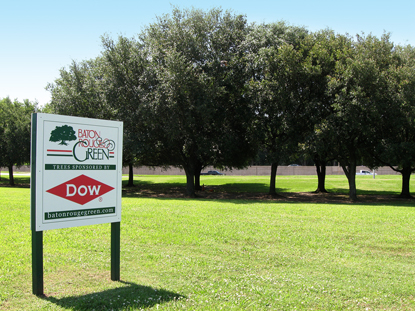
Not only do the numbers talk, but research proves sick individuals recover faster when they’re in a treed neighborhood and students perform better in school when surrounded by trees.
“With our hot Louisiana summers, it can be 10 degrees cooler in the shade,” Losavio says. “The trees also help to cool the roads, sidewalks and buildings. Plus, people are simply happier.”

